What if you could combine the hardwood forests, lakes and mountains of New York’s Adirondacks with the rugged coast of Maine, plus some European history? That, in a nutshell, is the Canadian province of Nova Scotia, which was the setting for the photography workshop I just taught.
An old friend in Ottawa (Canada, not Kansas) decided to start a photography tour business north of the border a while back (Highlight Photo Tours). I’m helping him with that, leading a trip to Quebec last fall and then this year to Nova Scotia. Next year we’ll tackle the Canadian Rockies. Rene’s done a great job of scouting the areas and building a full itinerary, and we’ve had good groups each time. For this trip to Nova Scotia, he offered a pre-trek option to spend an additional two days on Cape Breton Island, and after that we had four days to explore Nova Scotia, basing out of Halifax.
Here are some photos from the trip, along with stories about what was happening and the technical information for each photo. And if you’re interested in joining Rene and me next year in the Canadian Rockies, click here for all the details.
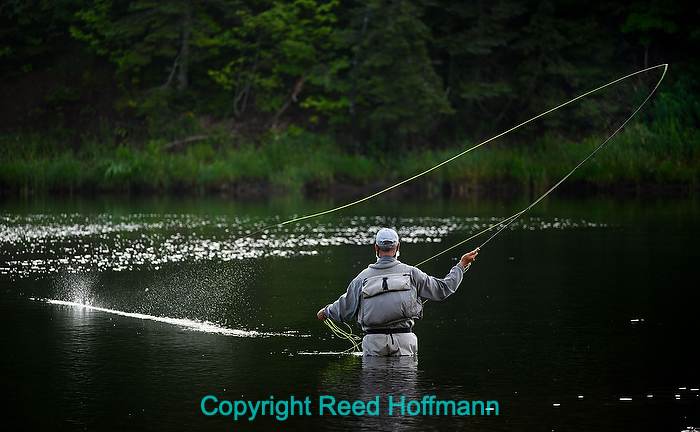
While planning the Cape Breton portion of the workshop, Rene met a fly fishing guide who invited us to join him and a client on an outing. That’s how we ended up in waders in the middle of the Margeree River at 6:30 on the first morning. When photographing fly fishermen you want to shoot them backlit, against a dark background so the line really stands out. Nikon Z 7, Aperture Priority, ISO 320, 1/500 at f/5.6 in Matrix metering, -1.7 EV, Nikkor 70-300mm f/4.5-5.6 lens at 240mm.
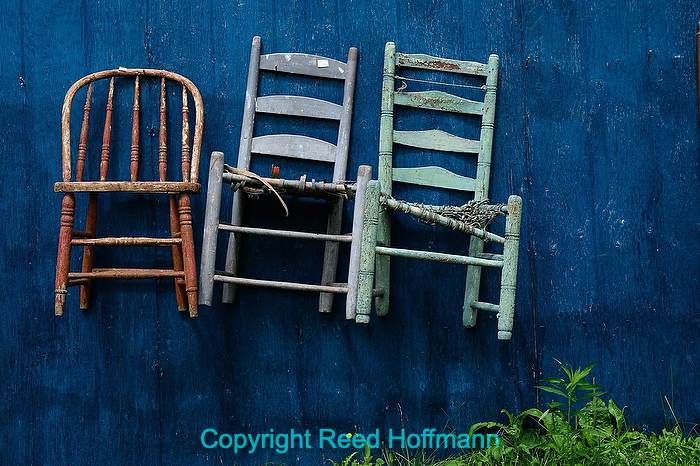
Driving by an antique store on Cape Breton Island, I saw these chairs hanging on a shed and yelled “Stop!” While we had specific locations we planned to visit, some of my favorite photos always come from the things we find along the way. Nikon Z 7, Aperture Priority, ISO 100, 1/200 at f/8 in Matrix metering, -1.0 EV, Nikkor AF 24-70mm f/4 lens at 64mm.
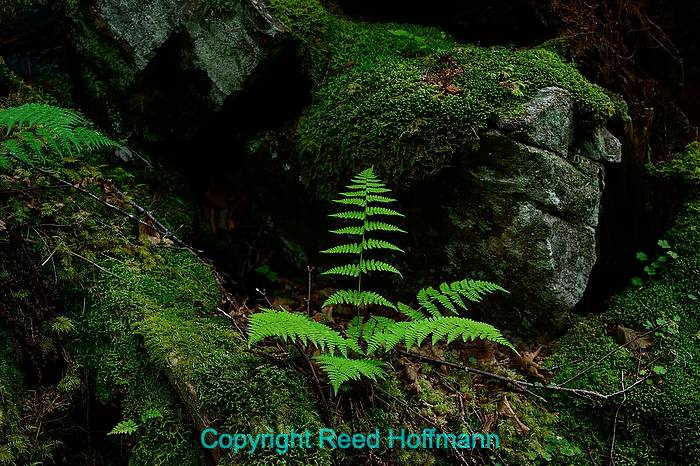
Cape Breton Highlands National Park is a large part of the northeastern section of the island, and we spent most of a day exploring it. This was off the side of a trail leading to a waterfall. The bright green of the fern really popped out amongst the lush growth. Nikon Z 7, Aperture Priority, ISO 160, 1/8 at f/8 in Matrix metering, -1.3 EV, Nikkor AF 24-70mm f/4 lens at 44mm.
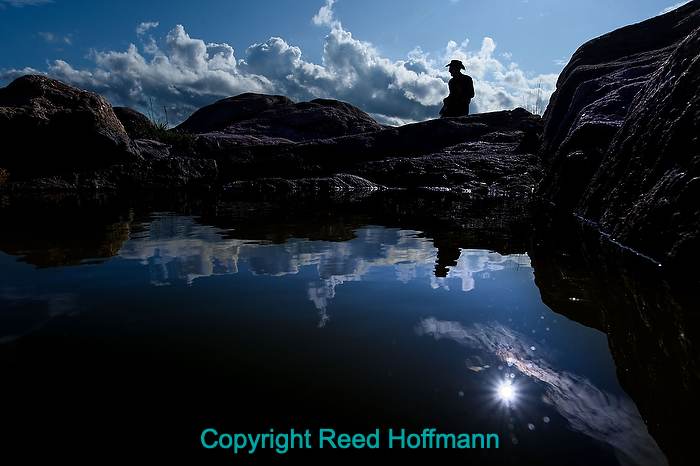
Green Cove Look Off (yes, “Look Off,” not Lookout) was our last stop in Cape Breton Highlands National Park, and we had a glorious sky to work with. These massive rocks overlook the ocean, with waves crashing below. But I went for a quieter shot, taking advantage of a pool of water to bring the sun and clouds into the lower section of the photo. To frame this I used the flip-out LCD of my Nikon Z 7 and held the camera just above the water’s surface. Nikon Z 7, Aperture Priority, ISO 200, 1/800 at f/11 in Matrix metering, -1.3 EV, Nikkor AF 18-35mm f/3.5-4.5G lens at 20mm.
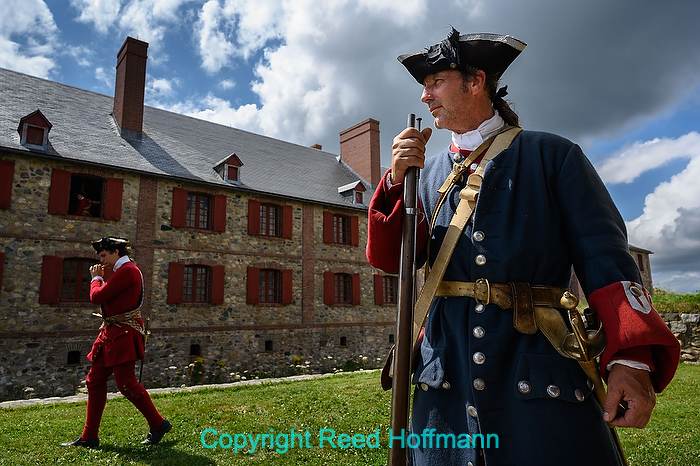
We spent the afternoon of our second day on Cape Breton Island at Fortress Louisbourg. Dating from the 1700’s, it was built by the French to protect their colony in the New World, but eventually was captured by the British. Today the large site has been restored and is full of historical re-enactors, making it well worth spending several hours there. Nikon Z 7, Aperture Priority, ISO 160, 1/500 at f/7.1 in Matrix metering, -2.0 EV, Nikkor AF 24-70mm f/4 lens at 24mm.
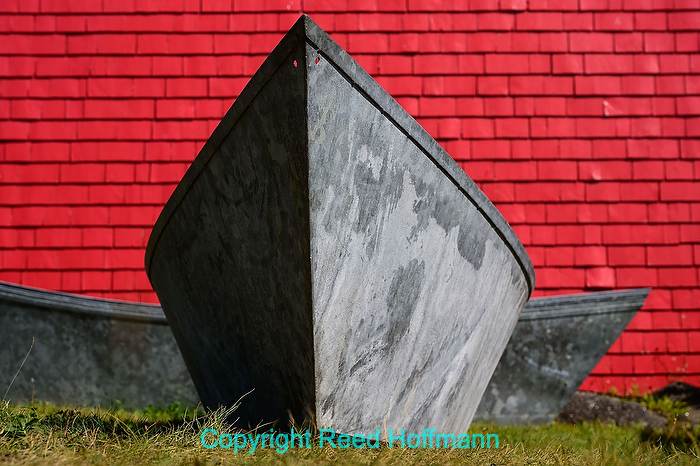
Back on Nova Scotia for the rest of the workshop, the first day we visited Lunenburg. A UNESCO World Heritage site, it’s a beautiful little fishing village, and in addition to wandering the streets looking for shots like this we also took a cruise on a schooner. Nikon Z 7, Aperture Priority, ISO 100, 1/400 at f/8 in Matrix metering, 0.0 EV, Nikkor AF 24-70mm f/4 lens at 70mm.
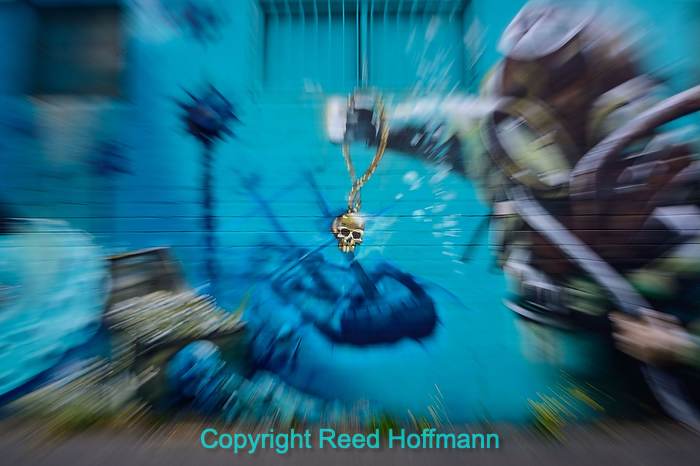
We stayed in Halifax for the main part of the Nova Scotia workshop, and among the places we visited nearby was a mural project in Dartmouth Cove. To create this image I mounted my camera on a tripod, lowered the ISO and reduced the aperture to force a slow shutter speed. Then I zoomed the lens as I shot. Nikon Z 7, Aperture Priority, ISO 31, 1/4 at f/22 in Matrix metering, 0.0 EV, Nikkor AF 24-70mm f/4 lens at 27.5mm.
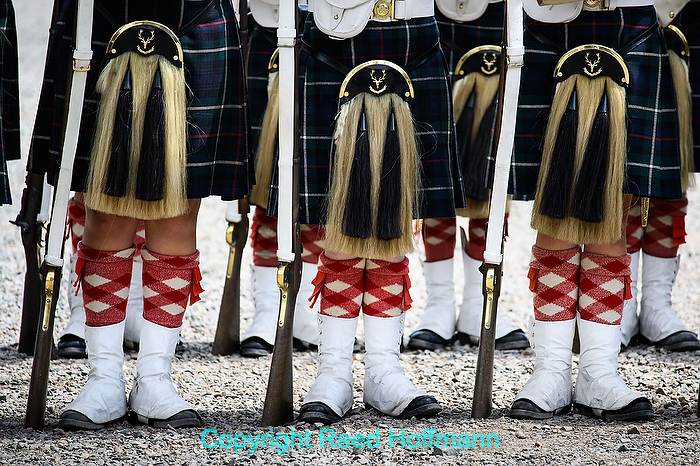
After visiting the murals and the Halifax Public Gardens, we headed to Halifax Citadel. Another fort, this time dating from the 1800s, it also had a full complement of re-enactors. This group was portraying the British 78th Highlanders and rehearsing for a parade the following day. Nikon Z 7, Aperture Priority, ISO 160, 1/320 at f/5.6 in Matrix metering, -0.3 EV, Nikkor VR 70-300mm f/4.5-5.6 lens at 300mm.
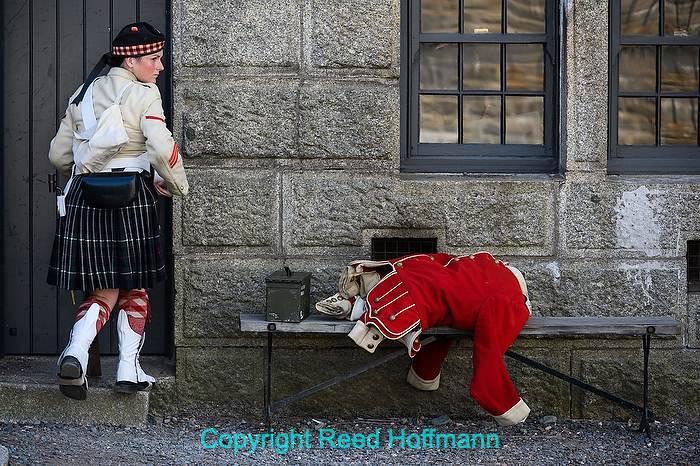
The members of the 78th Highlanders manning Halifax Citadel were both men and women, and this lassie was putting away part of a uniform used in a demonstration. Nikon Z 7, Aperture Priority, ISO 250, 1/250 at f/6.3 in Matrix metering, -0.7 EV, Nikkor VR 70-300mm f/4.5-5.6 lens at 165mm.
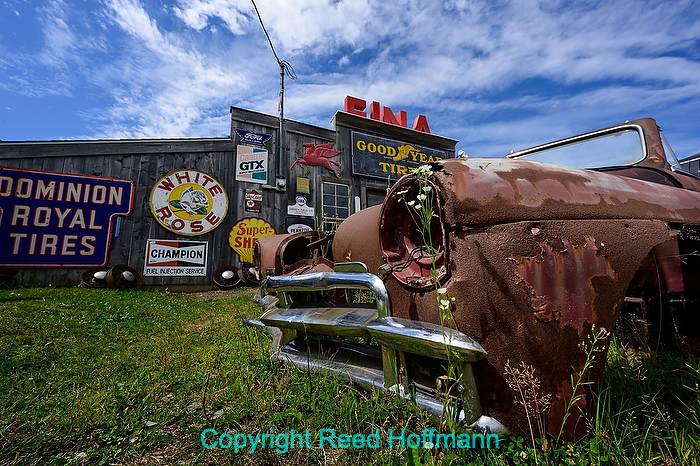
Another one of those “Stop!” moments, I saw this old auto repair shop as we were driving to the Bay of Fundy. We made sure to stop there on our way back, and the owners nicely let us spend some time exploring the property. I’m a big fan of getting low and using wide-angle lenses to have a foreground subject dominate the frame, and this is a good example of that technique. It works especially well if you have a great sky. Nikon Z 7, Aperture Priority, ISO 80, 1/125 at f/13 in Matrix metering, -0.7 EV, Nikkor AF Zoom 14-30mm f/4 lens at 15.5mm.
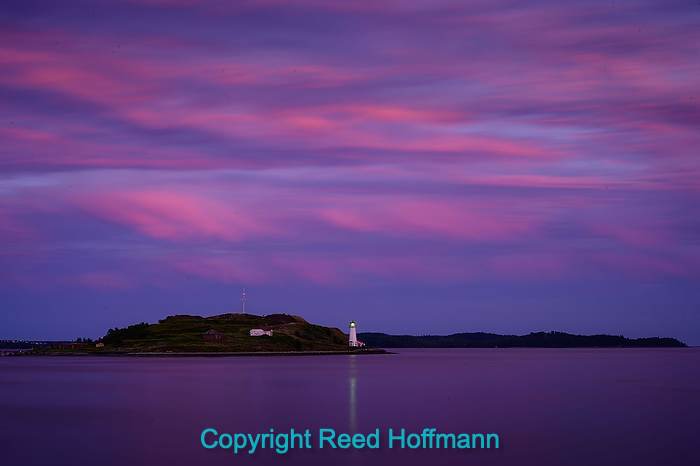
One night after dinner in Halifax, a few of us walked down to the harbor to see if we might have a good sunset with the Georges Island lighthouse. We nearly didn’t, as this color only lasted about five minutes. With the camera on my tripod, I added a neutral density filter so I could get a long exposure, helping create blur in both the water and clouds. Nikon Z 7, Aperture Priority, ISO 64, 20-seconds at f/22 in Matrix metering, 0.0 EV, Nikkor Z 24-70mm f/4 lens at 58mm.
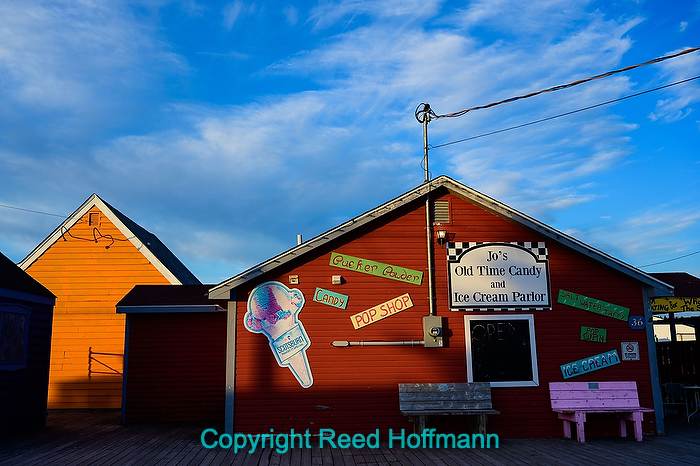
On our last day in Nova Scotia we got up early to shoot sunrise at Fisherman’s Cove. We were lucky with weather the entire trip, and while this morning started overcast, by 7am the sun began to poke through. I also shot this same scene later with full sun, but I think the blocks of shadow here make it more interesting. Nikon Z 7, Aperture Priority, ISO 125, 1/160 at f/6.3 in Matrix metering, -0.3 EV, Nikkor Z 24-70mm f/4 lens at 33mm.
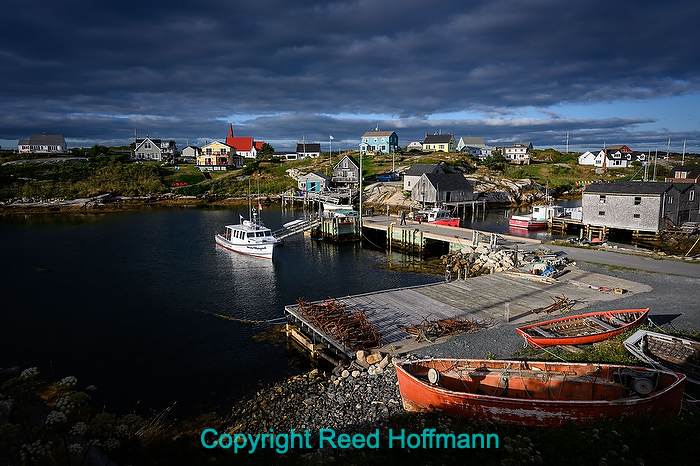
We saved one of the best-known scenic locations in Nova Scotia for the last evening, Peggy’s Cove. And again, we lucked out with the weather, getting some great skies and sunlight. Nikon Z 7, Aperture Priority, ISO 160, 1/500 at f/8 in Matrix metering, -1.0 EV, Nikkor AF 24-70mm f/4 lens at 24mm.
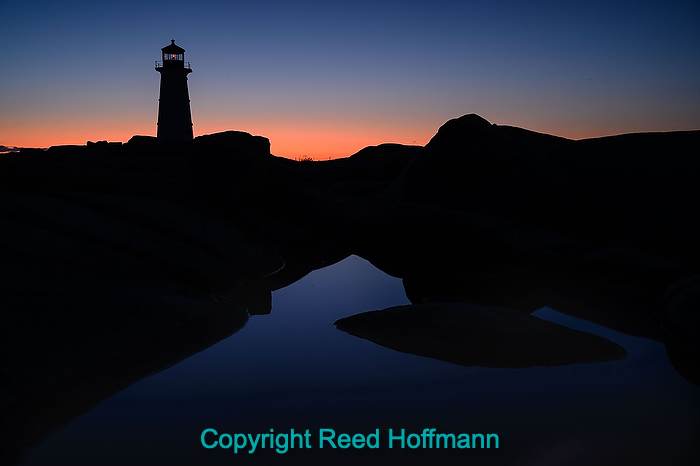
We had a beautiful sunset to finish the day at Peggy’s Cove, and took advantage of that by using the lighthouse as the subject. That worked well, but I’m always looking for something extra that might add to the picture. In this case, it was finding a pool of water to catch the blue sky’s reflection. The hardest part of making this picture was waiting for the crowds of people to clear the horizon line. Nikon Z 7, Manual exposure, ISO 100, 2-seconds at f/10 in Matrix metering, Nikkor AF 24-70mm f/4 lens at 33mm.

Hi, Great report Reed. I’m told there is post processing software that eliminates the “grain” on high ISO shots on M 4/3rds cameras. Not that I’m a post processing expert, but there are people who use the M4/3rds systems and use software in post processing for the minimization of grain.
Yes, there have been noise “removal” programs around since the early days of digital. But they don’t really remove noise, they just soften it, and the trade-off is they soften sharpness too. So no silver bullet there. Bottom line is noise is a subjective thing, some people object to it, others don’t mind it. And if your photos are only used/seen small, on screen, it’s less of an issue. But true noise reduction at higher ISOs will come through the camera/sensor, not afterwards with software.
Great story & images Reed. I’ve been to Nova Scotia a few times & this brings back nice memories- thanks for sharing!
My pleasure, Norm. And now I look forward to returning!
Have you done any comparisons to the Olympus ODM to the Nikon z series? I’ve been using the Olympus for overseas due to the lower weight. Contemplating switching when I can afford it. Went to Peggy’s Cove but cruises drop people off during high light only. I want to back. Will keep your friends name in my files.
Yes, Mary, I’ve actually got an OMD Mark II kit, and if someone’s really looking to size their kit down, going to smaller sensors like those used in the four-thirds cameras is the way to go because the lenses can be smaller. However, there’s a trade-off in high ISO performance, and for me that’s the key sticking point. There’s enough stuff I shoot at higher ISOs (meaning above 1000) that I prefer the larger sensors and less noise of my APS-C and full-frame cameras. Eventually, though, the manufacturers of those smaller sensors will make them perform better at 1600 ISO and above, and at that time I’ll take another look.